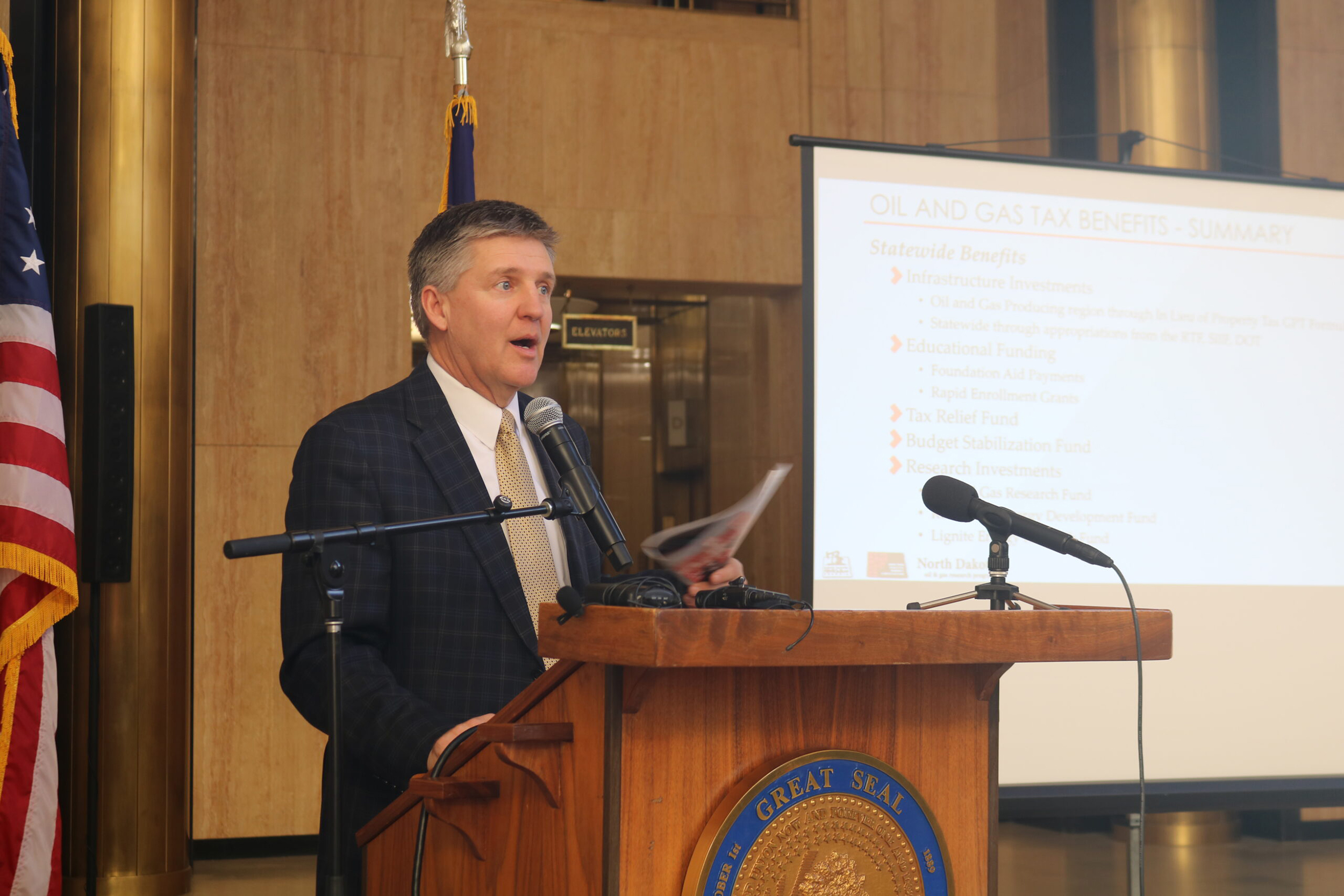
Press Release: 2022 Oil & Gas Tax Study: Industry Taxes Benefit Every ND County
The 2022 update of North Dakota’s Oil and Gas Tax Study is complete and there is good news – the revenue from the energy industry’s taxes benefits every person in the state.
North Dakota Petroleum Foundation and Western Dakota Energy Association shared the results of the study at a news conference in the historic Memorial Hall of the State Capitol Building in Bismarck. The biennial study reviews expenditures of the Extraction Tax and Gross Production Tax collected by the State of North Dakota. In fiscal year 2022, the Extraction Tax brought in $1.3 billion, and Gross Production Tax revenue equals almost $1.5 billion. Over the past five fiscal years, oil extraction and production taxes have equaled more than 51% of all taxes collected by the state – much more than property, sales, or other taxes.
The Oil and Gas Tax Study includes tax collection data from fiscal years 2008 to 2022 and illustrates how the funding has been distributed by the North Dakota Legislature. Over the 15-year period, oil and gas tax revenues reached over $26 billion. The revenue has provided over $1.4 billion for water projects, $1.8 billion for education, and an additional $5.9 billion in funding for communities and infrastructure across the state since 2008.
The news conference featured Sen. Brad Bekkedahl of District 1 in Williston and Rep. Josh Boschee who represents District 44 in Fargo. The lawmakers were joined by Ron Ness, North Dakota Petroleum Foundation CEO and North Dakota Petroleum Council President, and Geoff Simon, Western Dakota Energy Association Executive Director, to discuss how oil and gas taxes benefit all residents of North Dakota.
“As a resident of an oil-producing county, I’ve witnessed firsthand how oil and gas taxes positively impact communities. From infrastructure improvements to new schools and critical safety improvements, Williams County and Williston directly benefit from the taxes paid by the industries that are operating in our region. Through the incredible activity in the Bakken, as this study continues to show, non-oil producing counties are also positively impacted by the tax revenue,” says Sen. Bekkedahl.
The Oil and Gas Tax Study breaks down tax distributions by type and by county. It also lists how much each county has received for education, water infrastructure projects, and property tax relief. For example, since 2008 Stutsman County residents have received $28 million in property tax relief. Emmons County received $4.9 million, Ward County equals $93 million, and Cass County residents benefited from $237 million that lowered their annual property tax bills.
“Property tax relief is something that people are grateful to receive, and we are blessed to have oil and gas tax revenue to help homeowners across the state,” says Rep. Boschee. “And permanent flood protection will be a reality in the near future for the Fargo metro because of oil and gas taxes.”
Under State law, 30% of total revenue that comes from oil and gas taxes must be transferred into the Legacy Fund. To date, $6.9 billion has been deposited into the Legacy Fund since its creation in 2010. During the 2021 legislative session, lawmakers approved a $680 million bonding package to fund infrastructure projects across the State. The funding went towards flood control projects in Fargo and Minot, as well as infrastructure revolving loan funding, among other initiatives. Legacy Fund earnings are being utilized to repay the bonds instead of raising other taxes for repayment.
“From infrastructure investments, to education, tax relief, budget stabilization and research investments, the revenue from the oil and gas industry’s taxes truly touches every resident in the state,” says Simon.
“We hope North Dakotans review the results of the Oil and Gas Study to learn how the oil and gas taxes have become a resource for the entire state. From the Legacy Fund to Operation Prairie Dog, the revenue from the industry is a tool that is helping North Dakota stay competitive by improving our communities, from the smallest counties to the largest,” says Ness.
The data utilized to develop the annual study comes from the Department of Mineral Resources, Department of Water Resources, State Tax Department, State Treasurer, Office of Management and Budget, Legislative Council, State Investment Board, Department of Public Instruction, and Department of Transportation. To access the 2022 Oil & Gas Study, visit the Western Dakota Energy Association website at ndenergy.org.
“From infrastructure investments, to education, tax relief, budget stabilization and research investments, the revenue from the oil and gas industry’s taxes truly touches every resident in the state.”
-Geoff Simon, Executive Director, WDEA
